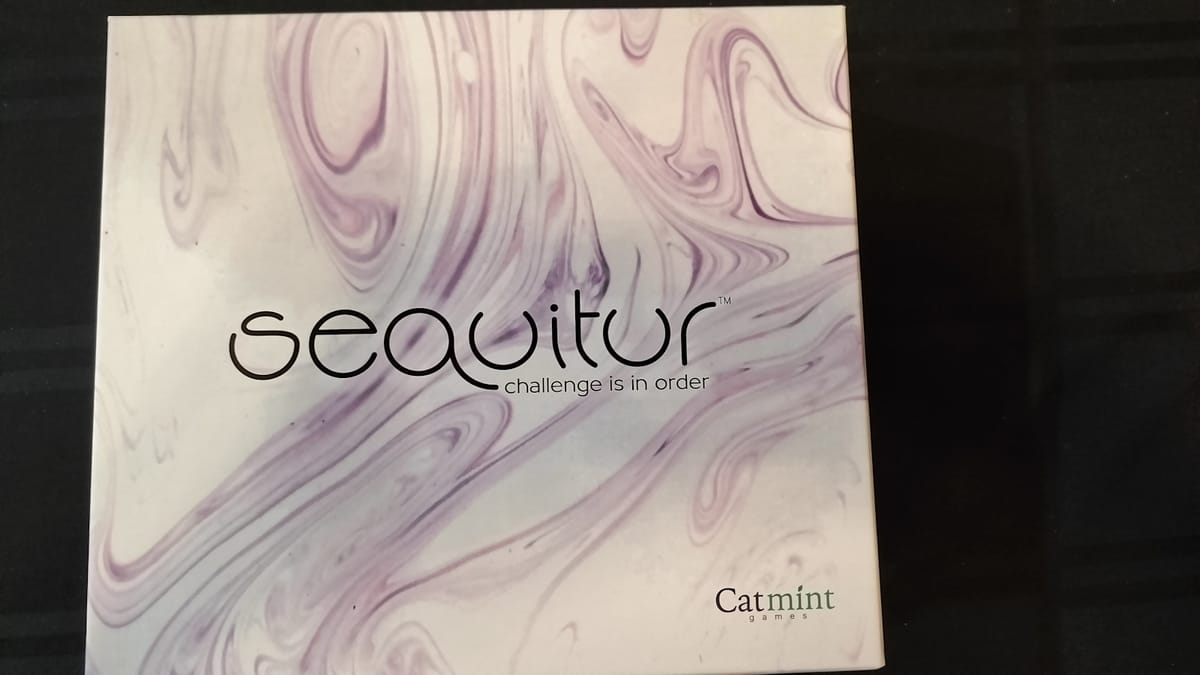
One of my favorite family memories is playing Scrabble with my grandma, who played far too much Scrabble. She was the kind of lady who played Scrabble with mostly 2 letter words that sounded made up, but were worth tons of points. My dad on the other hand, played Scrabble like a wordsmith, using lengthy, obscure words that similarly kicked my butt! But Sequitur… I might just be able to beat them both in a game of Sequitur!
Sequitur is a bit of a different beast when it comes to word games. Not only does it have clacky letter balls in a banana-boat style tray instead of small tiles, but it also operates on a different philosophy entirely. Sequitur is a word-building board game for 1 to 5 players published by Catmint Games and designed by Nick Madian and Brian Ondov. Its a game about having the balls to go for point goals, and using very limited actions to manipulate those balls.
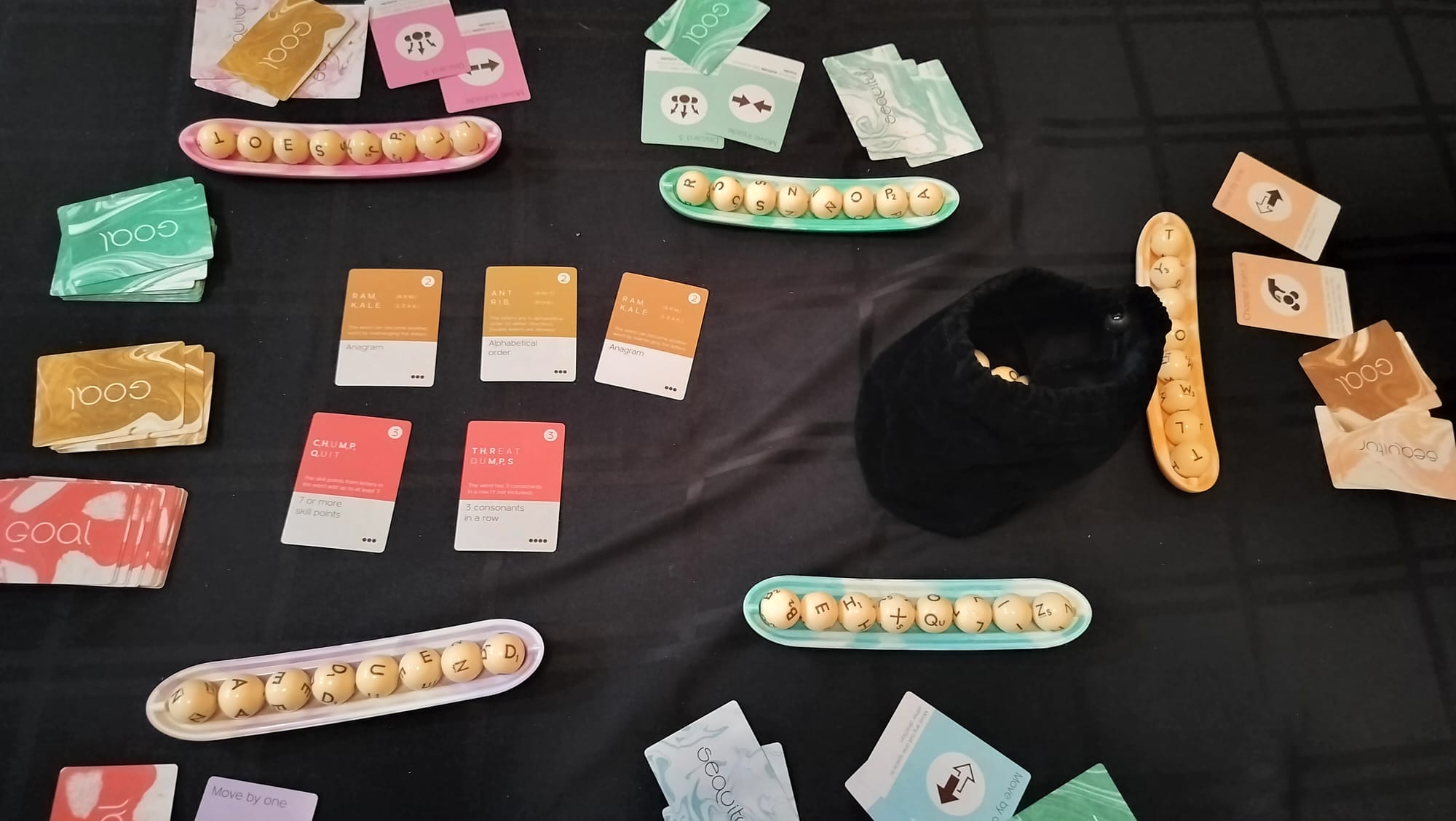
For a game about building words, it flows more like a hand of poker. First, you draw 5 letter balls, placing them in a random order on your banana boat. Based on this, you need to decide what difficulty level of a goal you want as your personal goal. There are 3 levels of goal: green, yellow, and red. Green goals are easy, but only worth one point, such as a three-letter word with 2 vowels in a row (like “air”). Yellow goals are harder, such as a word that can become another word when you remove a letter (like “stair” to “star”), and are worth 2 points. Red goals are the hardest, and include feats such as a word that is in alphabetical order (like “adder”). These are worth a whopping 3 points!
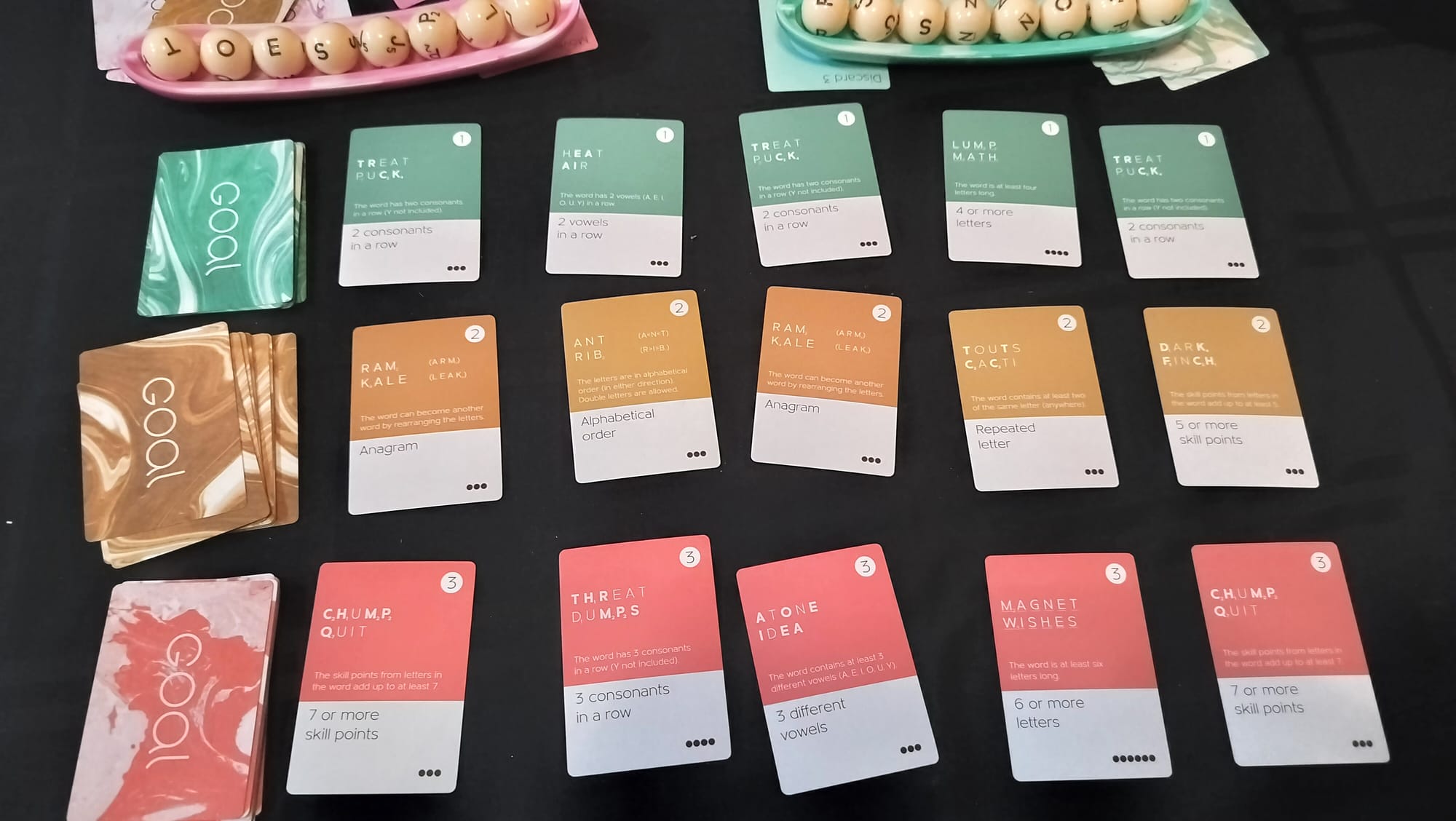
Once you draw a random personal goal, you get 3 more letter balls, one at a time, and they can go on either side of your banana boat to help you start putting order to chaos. Once you have your full complement of 8 letters, the main part of the game begins. The flow of the game goes like this: Draw a goal, either make that goal public so anyone can claim it, or discard it so no one gets it, then play one of your 5 action cards. Repeat 3 times, each time drawing a lower difficulty card. After the third, you just get rid of the letters that aren’t useful to you, keeping the order of the remainder the same. You can also reverse your word whenever you want, simply rotating the entire banana boat around.
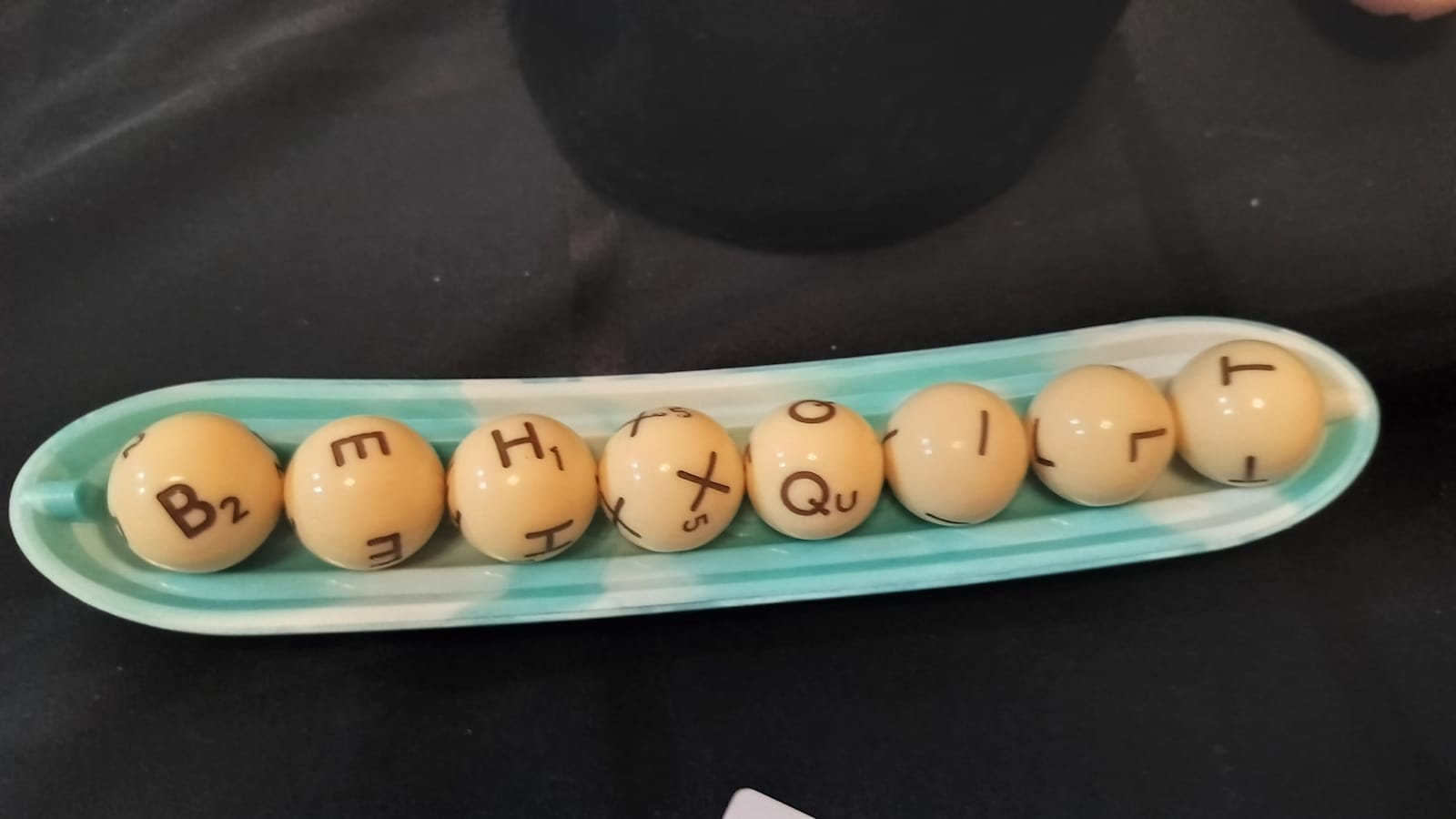
This flow means that you start with a mostly random set of letters, but you can slowly build a better word over the course of a round. However, since the red card comes first, you might not be able to complete it until the third round, so each high difficulty card you keep is a risk that someone else might claim it. That’s because once all three goal and action cards are played, the person with the highest word score gets to choose a goal. The score of the word is based on the length of the word, plus any numbers on word balls. Of course, the more difficult the letter to use, the higher the value of the letter.
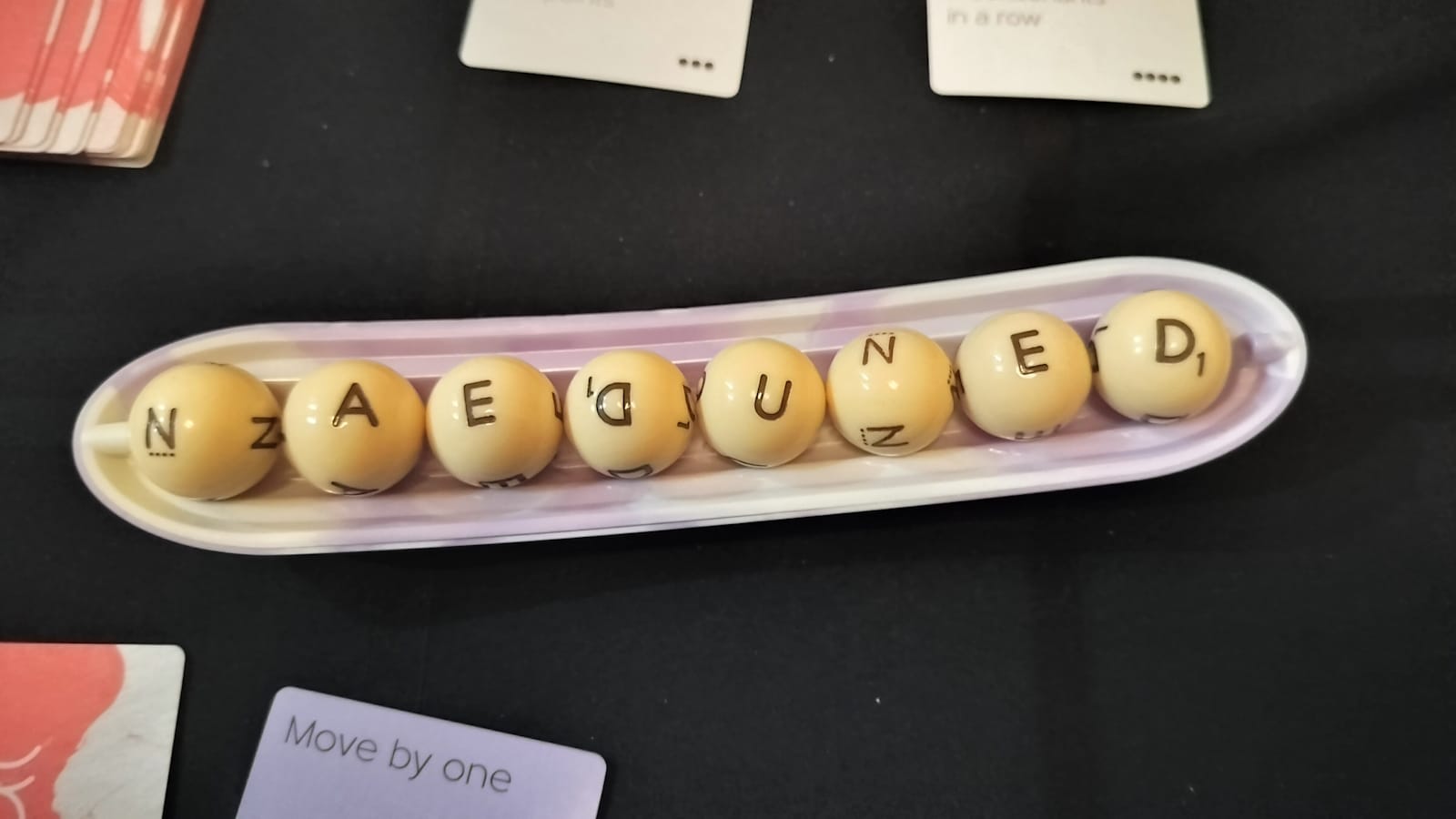
Sequitur becomes a game of risk versus reward on whether you want to try for a high point goal, knowing that others might get there before you do. Since words are open knowledge, players may also choose goals based on whether someone else could get them as well. A savvy player can use their opportunity to claim a goal first to take one of the goals that someone else could claim, instead of the highest point goal, preventing that player from getting as many points as they could otherwise. Of course, the only way to get into that position is to have a strong word, but the nature of the goals means that sometimes having a strong word doesn’t let you apply for most goals. This push and pull makes for a very clever word game.
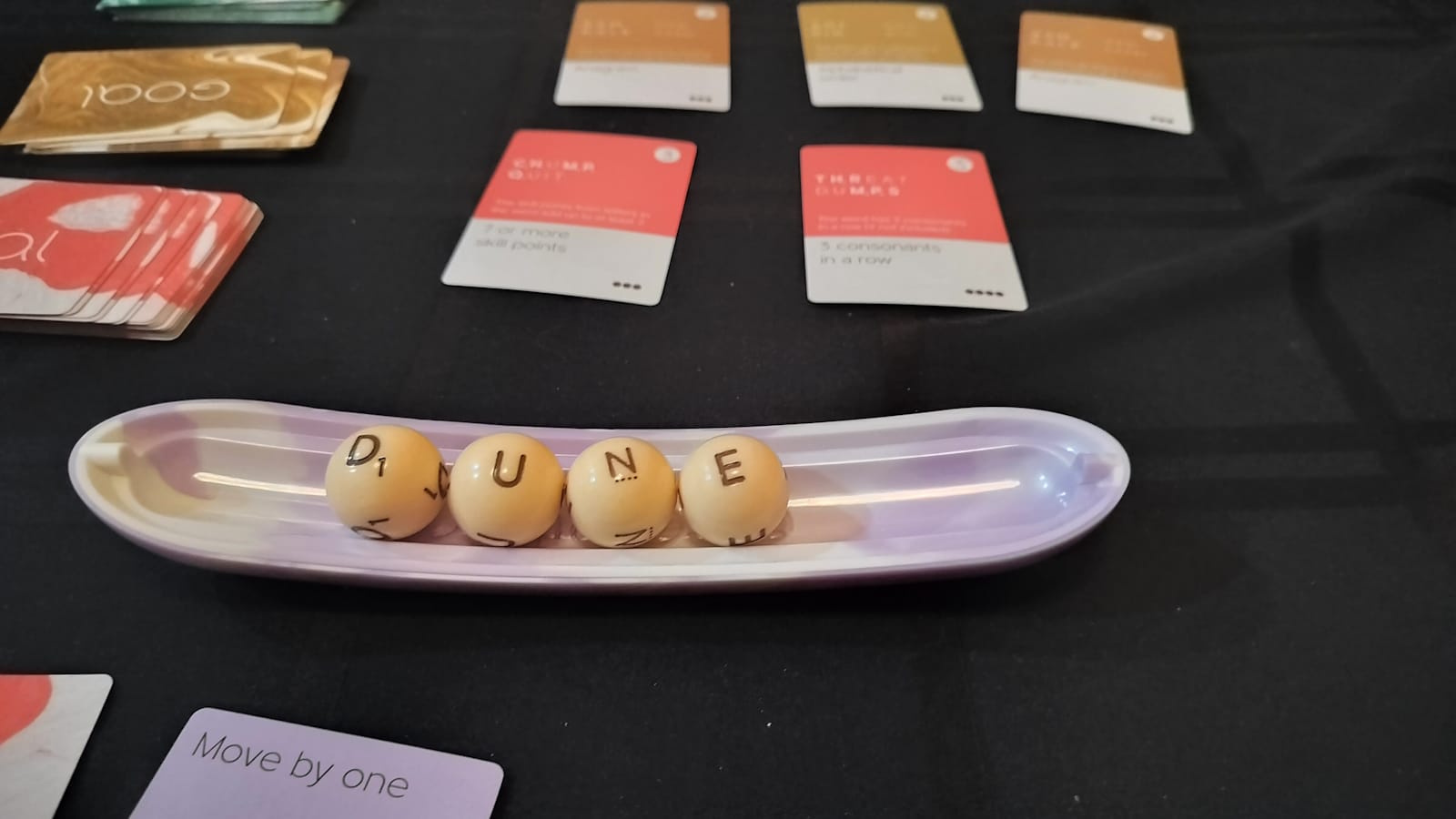
After three words (3 full rounds), players add up all their completed goal points, and that’s the game. Sequitur is short and sweet; however, the gameplay is rarely straightforward. There are only 2 cards that can ever provide additional letters: one which discards 3 letters of your choice, then you draw 3 random letters, and one that lets you discard one letter of your choice, draw three, and keep one. The game often meets you partway, however. For example, hunting for the U when you have the Q is rough, though unnecessary. If you use the Q with a separate U, the Q is worth a whopping 7 points, but it comes with a U if you can’t find one, though it doesn’t provide any word score at all in that scenario. The other actions are much simpler, moving a letter from the outside in, or the inside to the outside, or simply moving it one space. These limited actions, alongside the often tough goals, are what make the game more interesting than simply making the most obscure word you can.
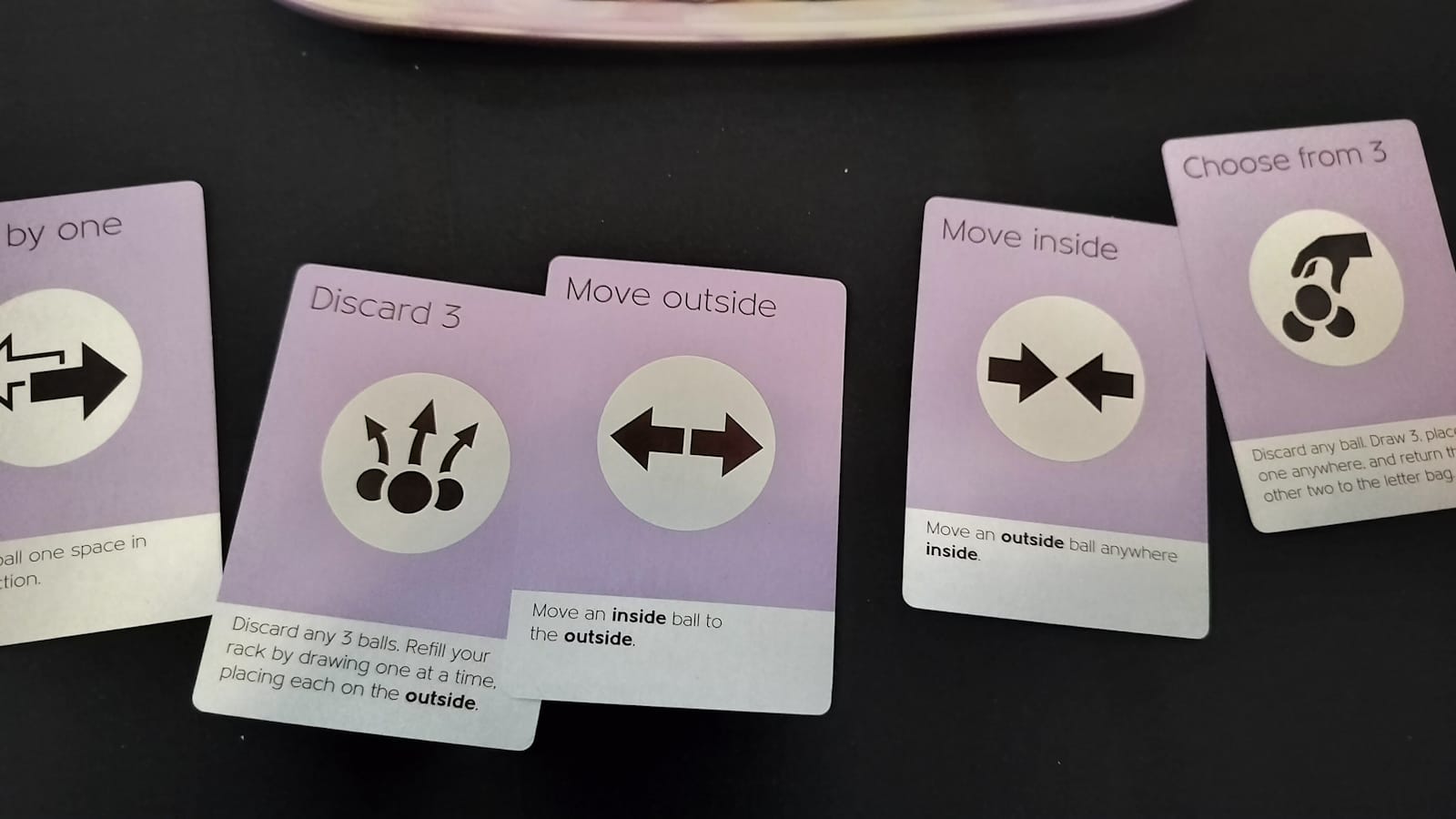
Of course, because your entire word is based on, at most, 14 randomly drawn letters, luck also necessarily plays a role. You randomly draw 8 letters, get up to 3 different letters from one card, 3 from another, and if none of those are the one you want, you might have to figure out a much lesser word. This feeling of the word being out of your hands can be frustrating, especially if you spend 2 of your precious actions trying to shoot for one or two specific letters instead of trying to move things around to make a word with what you have.
Despite the bad feelings bad luck always causes, I enjoy the goal-oriented path this word game takes, rather than the mad crossword blasphemy that happens in classic word games like Scrabble. In addition, the clicky, clacky letter balls are a joy to play with, the cards have a whimsical tie-dye art style that vibes very well with the game as a whole, and the banana boats are something I never knew I wanted to play with in a game. Overall, Sequitur is a competent word game.
Sequitur
Good
Sequitur is a game about manipulating letter balls on a banana boat. Aim for goals and for having the best word at the table. The unique letter balls and poker-like approach to game flow mean that there’s more to this game than having a big dictionary.
Pros
- Lovely clacky letter balls and wacky banana boats.
- Word game about more than just making the largest or most obscure words.
Cons
- Sometimes things are just completely out of your control.
- Game flow takes a bit to get a handle on.
This review is based on a retail copy provided by the publisher.
